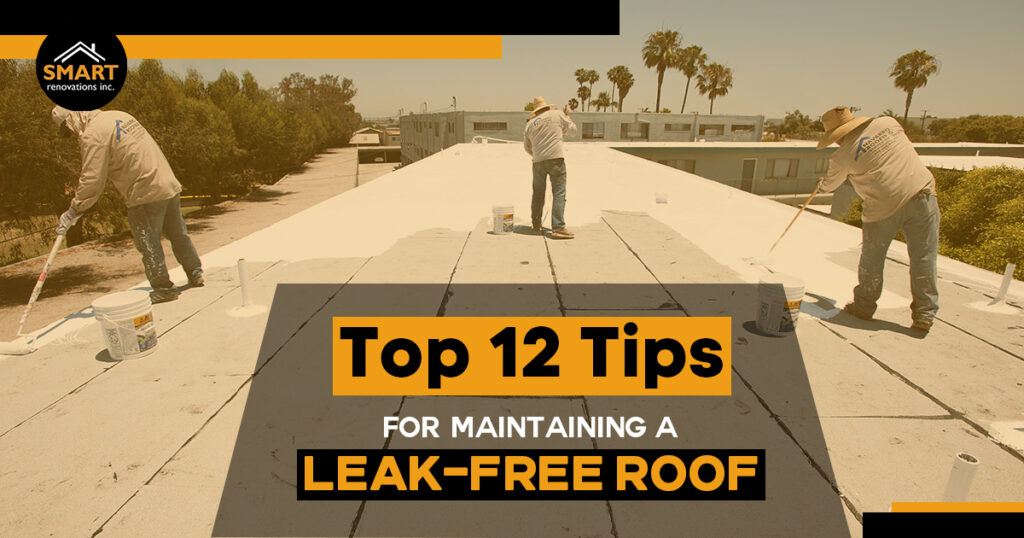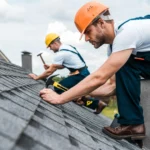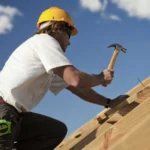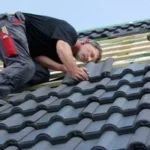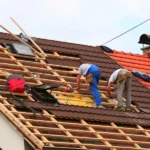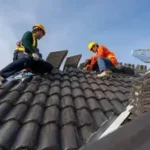Maintaining a leak-free roof is crucial to protecting your property from water damage, especially in commercial spaces where leaks can disrupt business operations and lead to costly repairs. A well-maintained roof can extend the life of your roof, reduce your long-term costs, and improve energy efficiency. Whether you own a commercial building or a residential property, understanding how to maintain your roof properly is essential.
In this blog, we will cover the top 12 tips for keeping your roof in top shape and avoiding leaks. We’ll also dive into commercial roof replacement cost to give you an idea of how to budget for your roof maintenance and replacement.
1. Schedule Regular Roof Inspections
One of the best ways to prevent leaks is by scheduling regular roof inspections. It’s recommended to have your roof checked at least twice a year, especially before the start of harsh weather seasons. During the inspection, a professional will look for damaged shingles, punctures, or debris buildup that could cause water to seep into your building. Early detection of minor issues can save you from major repair costs down the road.
2. Keep Gutters and Downspouts Clean
Clogged gutters are one of the leading causes of roof leaks. When gutters are filled with debris like leaves and twigs, water can back up under the shingles, leading to rot and leaks. Make sure to clean your gutters at least twice a year, or more often if your building is surrounded by trees. This will allow rainwater to flow freely off the roof, reducing the risk of leaks.
Also check out these:
Top 8 Eco-Friendly Roofing Materials for Sustainable Homes
Trends in Smart Roofing: Integrated Solar and IoT Solutions
3. Trim Overhanging Tree Branches
Tree branches that hang over your roof can cause damage during storms and contribute to debris buildup in gutters. Trim back any branches that are close to the roof to avoid scratches, punctures, and water accumulation. Keeping trees away from your roof will also reduce the risk of falling limbs during high winds.
4. Inspect Flashing Around Chimneys and Vents
Flashing is a material used to seal the gaps around chimneys, vents, and skylights. Over time, flashing can become damaged or corroded, allowing water to leak into your building. During your regular roof inspection, be sure to have the flashing checked and replaced if necessary. This small step can prevent major water damage and roof leaks.
5. Check for Missing or Damaged Shingles
Shingles are your roof’s first line of defense against water. Over time, shingles can become loose, cracked, or even fall off entirely. If you notice any missing or damaged shingles, it’s essential to replace them promptly. Not replacing damaged shingles could lead to water entering the roof structure, causing leaks and significant damage.
6. Ensure Proper Roof Ventilation
Poor ventilation can cause moisture to build up in the attic, leading to mold, rot, and leaks. Make sure your roof has sufficient ventilation, including ridge vents, soffit vents, and gable vents, to allow air to circulate properly. Proper ventilation will help regulate temperature and moisture levels in your attic, protecting the roof from internal damage.
7. Maintain Your Roof’s Waterproofing Layer
Many commercial roofs have a waterproofing layer underneath the surface to prevent water from penetrating the roof structure. Over time, this layer may wear out or become damaged. Regularly inspect your roof’s waterproofing membrane to ensure it’s intact. If you spot any signs of wear, it’s important to repair or replace it to keep the roof leak-free.
8. Apply a Roof Coating
A high-quality roof coating can add an extra layer of protection to your roof. Roof coatings are designed to prevent water infiltration, extend the life of your roof, and improve energy efficiency. Applying a roof coating can also protect against UV rays, which can cause the roof materials to degrade over time. Consult with a roofing professional about the best roof coating for your building.
Also check out these:
5 Must-Have Tools for DIY Roof Repairs
Durable Roof Coatings for Weatherproofing Your Home
9. Monitor Roof Age
The age of your roof plays a significant role in its ability to resist leaks. Most commercial roofs have a lifespan of around 20-30 years, depending on the materials used. If your roof is approaching the end of its lifespan, it’s essential to start planning for replacement. A roof nearing the end of its life may require frequent repairs, and leaks will become more common.
10. Understand Commercial Roof Replacement Costs
When maintaining a leak-free roof, it’s important to understand the potential costs of roof replacement. While regular maintenance and inspections can extend the life of your roof, there may come a time when replacement is the most cost-effective option. Commercial roof replacement costs vary depending on factors such as the size of the building, the type of roofing material, and local labor rates.
On average, the cost of replacing a commercial roof can range from $5,000 to $20,000 or more. However, it’s essential to factor in the long-term savings of investing in a new roof. A well-installed roof can reduce maintenance costs, improve energy efficiency, and protect your property from future leaks and damage. Getting multiple quotes from roofing contractors can help you determine the best option for your budget.
11. Install a Drainage System
Installing a proper drainage system is crucial, especially for flat roofs. If water cannot flow off the roof efficiently, it may pool in certain areas, leading to leaks and water damage. Ensure that your roof has an adequate drainage system to direct water away from the building. Installing drains or scuppers in key areas will prevent water from accumulating and reduce the risk of leaks.
12. Invest in Professional Roof Repair Services
Even with regular maintenance, some issues may still arise. If you notice signs of water damage or suspect a leak, it’s important to contact a professional roofing contractor right away. Attempting DIY repairs can lead to further damage and may void your warranty. Professional roofing contractors have the experience and expertise to quickly identify and repair roof leaks, saving you time and money in the long run.
Conclusion
Maintaining a leak-free roof is essential for protecting your property from water damage. By following these 12 tips, you can extend the life of your roof, improve energy efficiency, and reduce the likelihood of costly leaks. Remember, regular inspections, proper ventilation, and understanding commercial roof replacement costs will help you stay ahead of any roofing issues.
If you need assistance with roof maintenance or a commercial roof replacement, contact Smart Renovation Inc. Our experienced team is here to help you keep your roof in excellent condition for years to come.
Contact Smart Renovation Inc today! Check our google store: Smart Renovation

